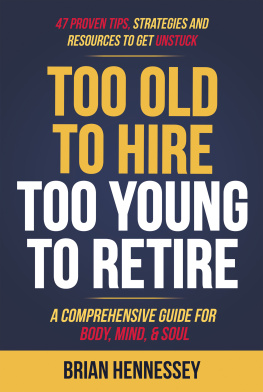Relationship Skills in Social Work
SAGE has been part of the global academic community since 1965, supporting high quality research and learning that transforms society and our understanding of individuals, groups and cultures. SAGE is the independent, innovative, natural home for authors, editors and societies who share our commitment and passion for the social sciences.
Find out more at: www.sagepublications.com
Relationship Skills in Social Work
Roger Hennessey
Roger Hennessey 2011
First published 2011
Apart from any fair dealing for the purposes of research or private study, or criticism or review, as permitted under the Copyright, Designs and Patents Act 1988, this publication may be reproduced, stored or transmitted in any form, or by any means, only with the prior permission in writing of the publishers, or in the case of reprographic reproduction, in accordance with the terms of licences issued by the Copyright Licensing Agency. Enquiries concerning reproduction outside those terms should be sent to the publishers.
SAGE Publications Ltd
1 Olivers Yard
55 City Road
London EC1Y 1SP
SAGE Publications Inc.
2455 Teller Road
Thousand Oaks, California 91320
SAGE Publications India Pvt Ltd
B 1/I 1 Mohan Cooperative Industrial Area
Mathura Road
New Delhi 110 044
SAGE Publications Asia-Pacific Pte Ltd
33 Pekin Street #02-01
Far East Square
Singapore 048763
Library of Congress Control Number: 2010929655
British Library Cataloguing in Publication data
A catalogue record for this book is available from the British Library
ISBN 978-1-84860-155-0
ISBN 978-1-84860-156-7 (pbk)
Typeset by C&M Digitals (P) Ltd, Chennai, India
Printed by CPI Antony Rowe, Chippenham, Wiltshire
Printed on paper from sustainable resources
CONTENTS
ABOUT THE AUTHOR
Roger Hennessey lives in a rural part of Norfolk. On leaving university a chance meeting caused him to abandon other career plans and start work in a childrens home leading to him training in social work at the University of East Anglia. While there he undertook an extended placement at Peper Harow then a therapeutic community for adolescent boys in Surrey. The experience was formative in his thinking because in the community it was the understanding and practising of relationships that lay at the heart of constructive outcomes. There it was a form of love rather than sanction which exercised control an approach to managing behaviour that taught and motivated residents to manage themselves in more constructive ways. On qualifying in social work he returned to residential childcare and, later, became a child and family social worker and guardian ad litem. Since the mid-1980s he has taught part time at the School of Social Work and Psychology at UEA and worked part-time as a counsellor in the Norwich diocese, where he also undertakes safeguarding work. His hobbies include riding and repairing his Royal Enfield, maintaining his bicycles and, most of all, cycling through Norfolk lanes and visiting its medieval churches. A few years ago he rode his bike to Santiago de Compostela and he is planning to ride from Canterbury to Rome.
| INTRODUCTION TO RELATIONSHIPS IN SOCIAL WORK |
Social work is carried out within a network of human relationships. Indeed, it is human relationships and the many types of problems associated with them that are usually at the root of social workers professional tasks. And it is this relational dimension in social work practice which often draws students into making it their career fulfilling their wish to work with people.
This book is an attempt to consider in depth the place of relationships in social work practice and to explore ways in which workers can use relationships to promote creative outcomes in their encounters with clients. As you work through the book you will see why using relationships requires social workers to use themselves, and why using the self, in the sense meant here, requires an enhanced knowledge of the self that is being used. So, self-awareness in the social worker is a major theme that you will find recurring throughout the chapters.
But first it is essential to understand that social workers relationships with their clients are not neutral and free-floating. Rather, they are to a greater or lesser extent tied down, influenced and shaped by wider socio-economic, political and cultural contexts. There is no one-to-one relationship between a social worker and a client that is not impacted upon by macro-frameworks such as legislation, or protocol, or departmental budgets. Equally, any specific workerclient relationship will take place within a cultural context that holds particular attitudes towards fundamental dimensions of life such as sexual relationships, child-rearing practices, roles associated with gender, lesbianism and homosexuality, marriage and divorce, and so on.
To these influences on the workerclient relationship must be added the fact that individual social workers are employed by agencies that have specific tasks which will influence any relational interaction a worker has with a client. Thus, the term social worker is multifarious, describing a heterogeneous group of individuals who are employed in settings that may range from statutory work with children to local voluntary agencies with a focus on homelessness or hospice care. And within this diversity of social work roles can be found jobs that are mainly desk-based, working with computerised data, and other work where frequent face-to-face contact with clients is normal and essential to the agencys function. Thus, to begin to understand a specific workers relationship with a specific client, one would need to know about the macro-structures under which the agency operates, the cultural contexts of the client, the agencys defined tasks and the methods it uses to complete them.
Contextualising workerclient relations is important to understanding them and in the book there are case examples for you to consider in terms of the influences which impinge on the relationship. But in normal circumstances the greatest influence on relationships is workers themselves. It is their self which they bring to their relationships and which forms the clients most direct experience of the humanity of social work. The self of the social worker is the face of their agency, and it can be the face that is associated with laws, powers and procedures. Thus the social workers self is a visible sign and experience for the client of other, less tangible things. It is therefore not surprising that a workers self and how they use it to relate to their clients can have a huge impact on how the client feels and how they act and react. This is why one important focus in this book is you, and how you can learn to develop and use your self creatively and consciously in your professional practice.
In order to help you to develop the skills of using your self the book will provide you with knowledge about the importance of relationships to human well-being, and help you to learn and practise ways of relating that are deeper and more therapeutic. The chapters focus on two basic questions which are the












